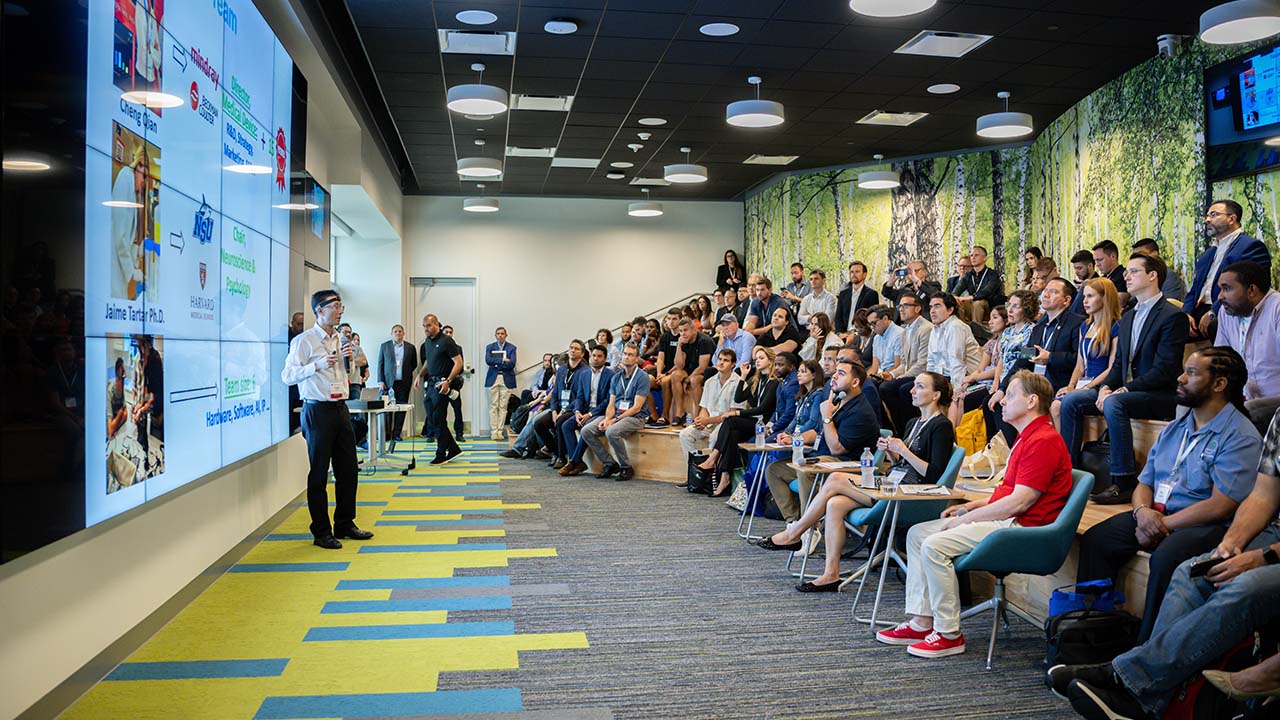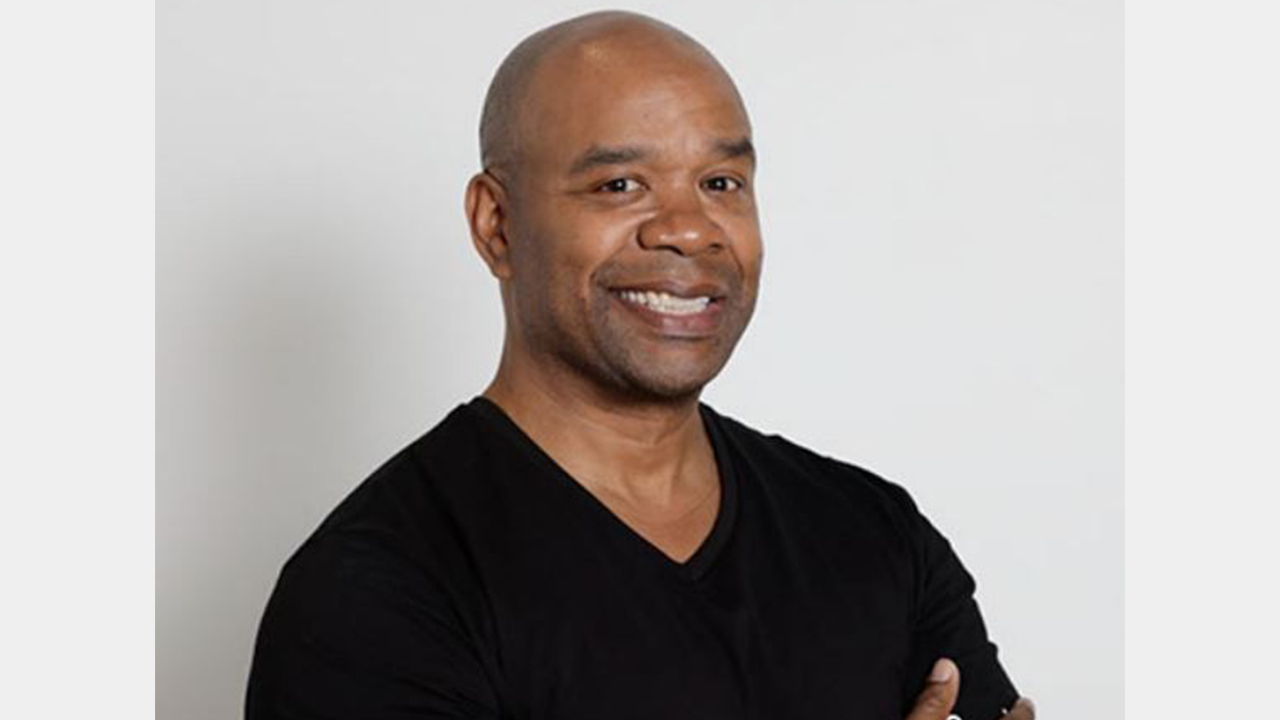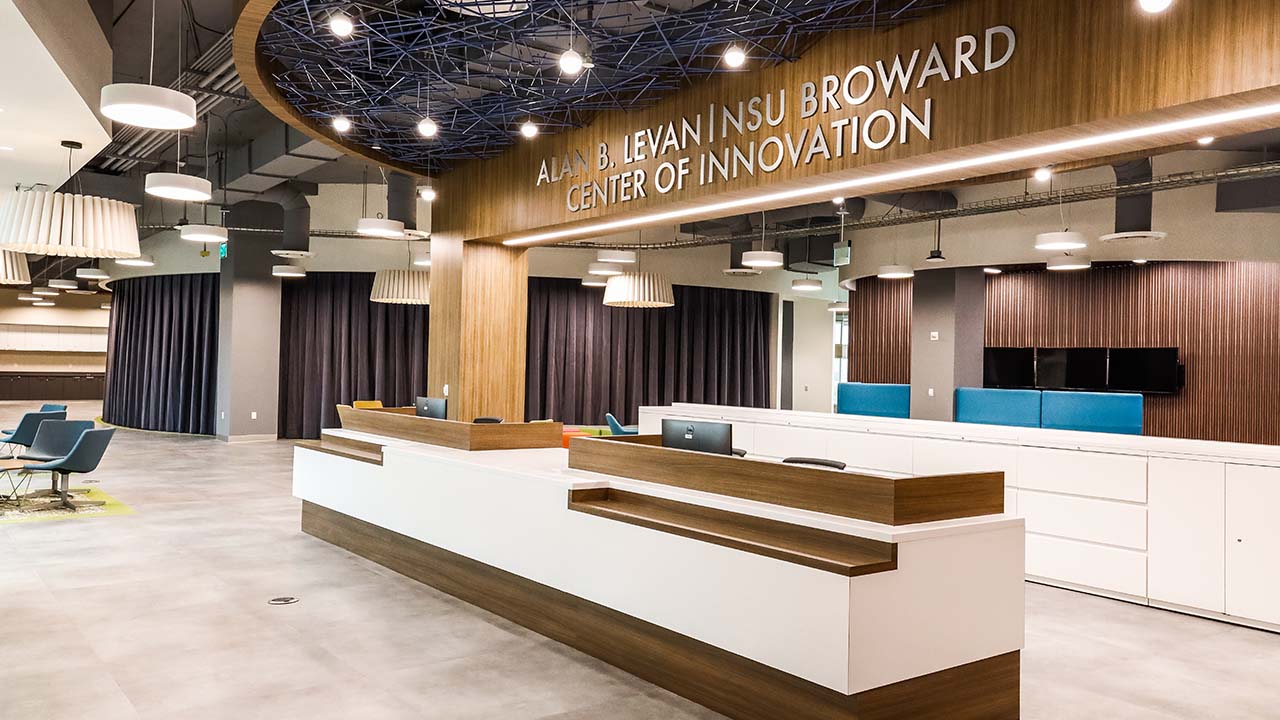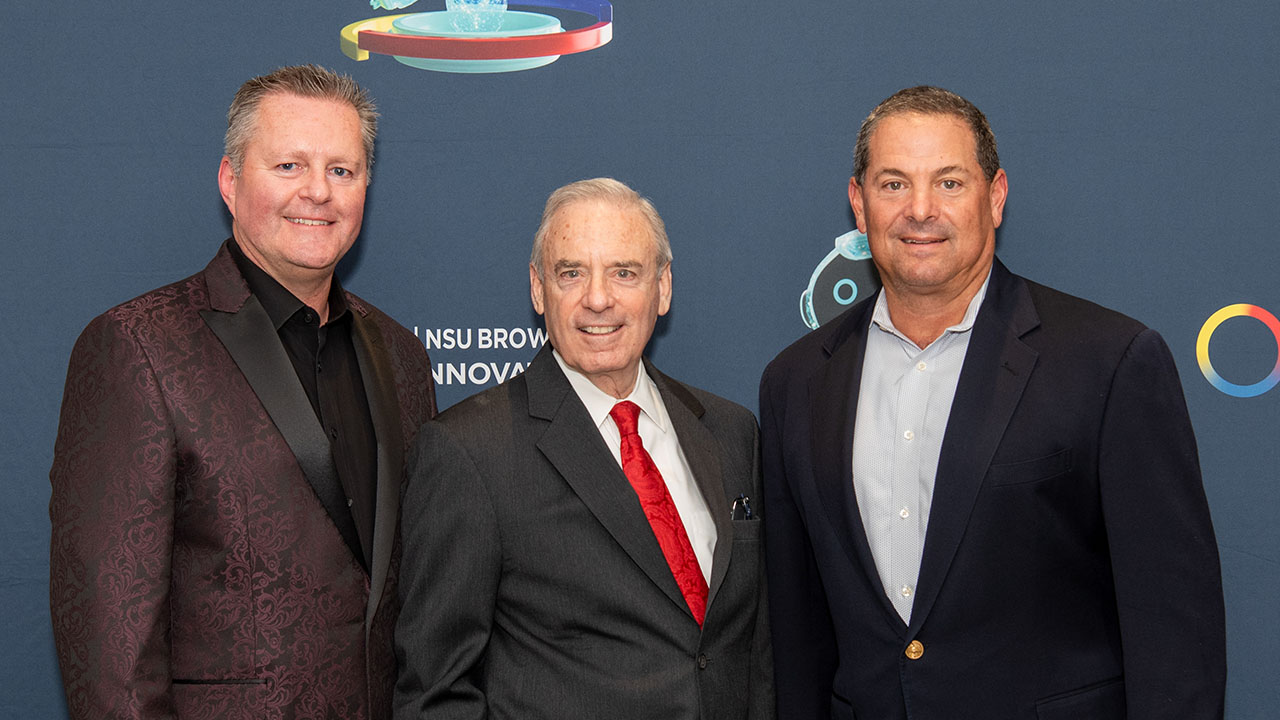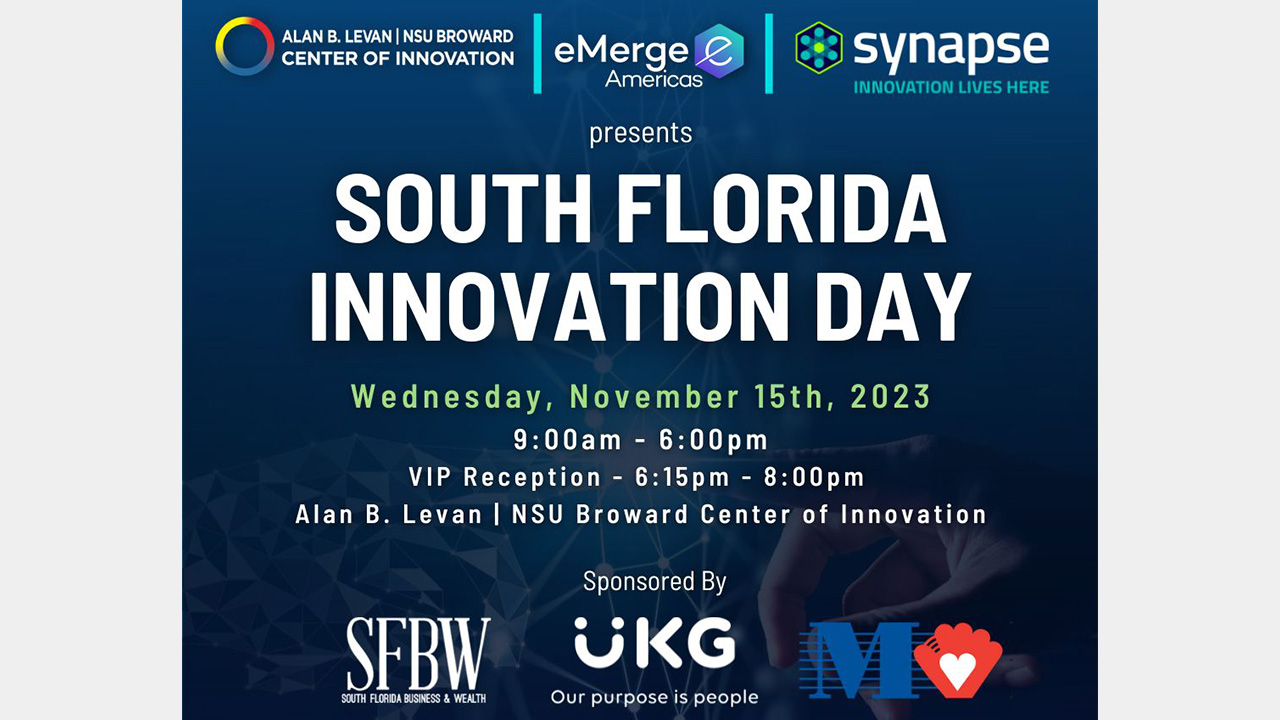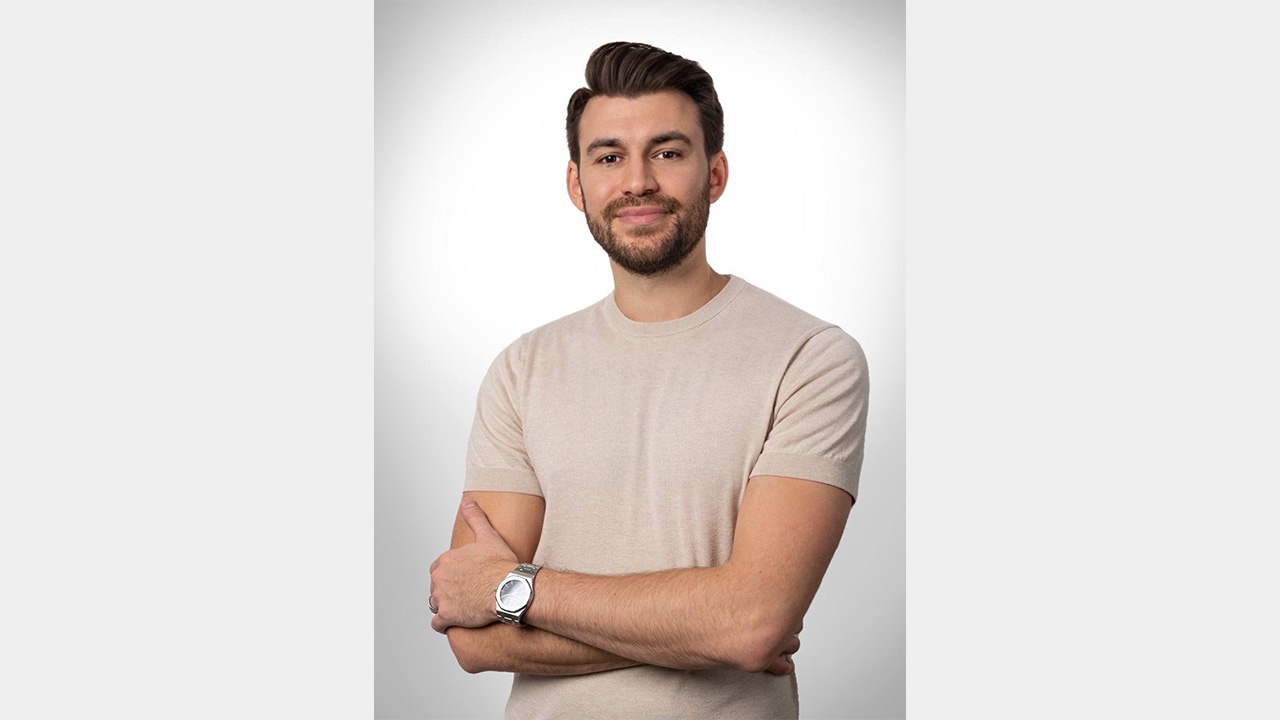SFBW recently convened a well-attended panel to consider the multifaceted issue of transportation infrastructure and planning in South Florida. The meeting was moderated by Anthony Abbate, professor of architecture and director of the MetroLab at Florida Atlantic University, who was joined by Beth Alton, executive director of Hillsborough Transportation Planning Organization in Tampa; James Cromar, deputy executive director of mobility initiatives at the Broward Metropolitan Planning Organization; John Englander, oceanographer and author; and John Renny, professor and urban planning expert at FAU.
In a wide-ranging conversation, these experts touched on topics including public/private partnerships to Elon Musk’s tunnels proposition to assessments of the various models of sea level rise.
WATER WORKS
We recently heard from an expert who noted that the character of our cities is determined by the transportation systems we choose for them. Given that we live so close to the water here in South Florida, do you think Fort Lauderdale’s moniker as “The Venice of America” might foretell the future of our region?
Englander: Transportation planning is a great lens through which to look at climate change and sea level, because transportation planning is typically done looking 30 years to 100 years in the future. Not many other professions look at things like that. I’d like to frame things a little bit by pointing out that, while we see climate change headlines in the news—flooding in Germany, fires out west—and we’re all aware of climate change, even if we went to 100-percent electric vehicles and renewable energy today, the weather is not going to go back to what it was. We’ve warmed the planet. We need to be resilient in addition to being sustainable. And we need to be adaptive. When sea level is many feet higher, it won’t require sustainability and resiliency—it will require adaptation.
Anybody who has been to Venice recently knows that the idyllic city we remember is not the same. St. Mark’s Square did not used to flood and now it floods 80 to 100 days a year. Venice forces us to confront reality.
Renne: In South Florida we are very much vulnerable to climate change. The concept of adaptation is very important for us. We need to address adaptation and mitigation at the same time. We do need to reduce carbon emissions, and, on the other hand, there is a certain amount of heat built into the ocean that is going to make the levels rise. Even if we stop today, we will see the impacts for the rest of our lives and beyond.
Alden: The role of metropolitan planning organizations is in a way connecting vision to dollars, and numbers about how we can really make a difference. How can we make it real when our community members say that they want change? From a big-picture perspective, we have had a couple of very different transportation paradigms. We had a water-oriented transportation system for many decades, and then we built a rail-based system, and then an automobile-based
system. And we have been having a conversation in [the] Tampa Bay [area] and many other metro areas about needing to make a big change and reshape our transportation system to allow for more choices that are not automobile dependent. That’s a big shift. And its a decision about investing.
Resilience and sustainability are big factors in the conversation—and to that end one of the big things we brought to the table is, how do we make the systems we have more resilient to the changes that we already know are happening.
Cromar: The big event for us at the Broward [Metropolitan Planning Organization]—a turning point—was in 2012 when Superstorm Sandy washed out part of [Highway] A1A in Fort Lauderdale, the section north of Sunrise Boulevard. For a few weeks there was a lack of connection, and we thought, what do we do? Do we consider not rebuilding the road, because it was on a barrier island? There were a lot of questions about economic activity. It’s along the beach—there are hotels and tourists and people spending money—so the decision was reached to rebuild the road at great expense: about $10 million for a half-mile segment.
Renne: Typically, in the past, we have looked at streets as being about moving cars—and now how important it is to think about them not just as a way to move cars or even people but how to address the climate impacts that were seeing, like the increase in heavy rain. How do we use landscaping to improve the livability of a street—increasing shade canopy, increase green space, which has psychological benefits to some people, and do it in a way to manage climate impact.
CLIMATE CHANGE
Englander: We’re getting some audience feedback. Seventy-two percent say they are making investment decisions based on climate change.
Renne: We’re looking at property values and future sea level rise—and what the market is saying with regard to private investment. Some studies are starting to show that people are making investment decision to buy property on high ground.
We are seeing what they call “climate gentrification.” Little Haiti has been one of these neighborhoods where developers are going and buying lots and redeveloping not only because it is well-located and convenient to the rail corridor and to downtown Miami, but also because it’s high ground.
So this is partially a transportation and mobility issue, but the question is also shifting to becoming an equity issue for those who can’t afford to live in higher-ground neighborhoods.
Cromar: It’s curious that in South Florida, compared to some other places where maybe the lowlands that get flooded, tend to be less-desirable places to live. In South Florida, people want to be near the water. They want to be near the coast, so that isn’t a disincentive that it is in other places. So, if people are looking for higher ground to move to, they might be moving to arears that might have been less desirable.
The flip side is that as we look at making investments in resiliency improvements, there needs to be an economic base to support that level of investment. There are questions about tradeoffs. There was a study last year. There’s a roadway in the Keys that will cost about $100 million to improve, and it serves 30 houses, and so is that a wise use of limited government funds? We look at Miami Beach where they are making a lot of roadway improvements. They have a strong economic base that will support hundreds of millions in investment, to pay back the cost of the improvements.
We have needs throughout the county. We can’t do everything, so we have to make some hard choices and look at funding that’s not just state and federal but also local. Maybe there is private investment from the development community.
Alden: Setting priorities in some kind of rational way is going to be very important. There are going to be a lot of difficult choices coming up as we figure out how to adapt to these changing conditions. One of the things that we’ve started to do is to rank our roadway segments based not only on their vulnerability but also on their criticality—from an evacuation point of view, from supporting communities [that] are particularly vulnerable or who have been underserved by infrastructure decisions in the past. Combining all of those things together to try to set priorities is going to be important. Equally important for all of our communities will be communicating what we are doing, so that our public has confidence that we are systematically working to reduce vulnerabilities to climate change.
MONEY MATTERS
Pension funds and private equity have strong positions in what can be called sustainable investments. What more can the public sector do?
Renne: It’s a really good question. No. 1, what we’re seeing right now is a fundamentally flawed fiscal policy on how we fund transportation in the United States, and this has gone on for many decades. It’s the gas tax. The Big Ideas report from ARK Invest, one of the leading Wall Street ETF investment companies, states that by 2025 or 2026, the average electric Toyota Camry will cost $18,000 compared to the average gasoline-powered Camry, which will cost $26,000. Battery technology is making electric vehicles cheaper. I serve on the long-range advisory committee to the Florida Department of Transportation. And they are telling us that when the bulk of new cars switch over to electric vehicles, they are expecting revenues from the gas tax to drop off. Because we don’t have an income tax, Florida has a higher reliance on the gas tax than many other states. Are we going to institute an income tax to pay for it? Probably not.
What’s going to happen is the burden of paying for transportation infrastructure is going to be increasingly shifted to local governments, particularly county governments.
Alden: It’s a great point. A local option sales tax, approved by voters— that’s an important, though somewhat volatile source. One of the other ideas that’s been floated, which doesn’t seem to have any legs in Congress right now, is fees associated with vehicle miles traveled. That would apply to electric vehicles as well. There could be an electronic odometer reading, and you could report it while you’re doing your annual vehicle registration. You would be paying a fee like an annual gas tax, but based on the impact you are creating on the roads. That might be particularly useful as we move into an environment of shared mobility and mobility as a service.
There’s been a lot of discussion about whether people will continue to own their own vehicles or will they have subscription services. And if we do rely more and more on mobility-on-demand systems, there may be additional impacts on the roads that people aren’t necessarily thinking about. For instance, consider the amount of time that taxis used to circulate while waiting to pick up a fare. That’s happening now with Uber and Lyft, and there have been studies showing that the circulation of empty vehicles often happens in the most congested areas, and those vehicles tend to be occupied about 60% of the time, adding a lot of vehicle miles onto a transportation system that may already be overburdened. So a transportation system funded through taxes on vehicle miles would be a disincentive.
Cromar: From the Broward perspective, we now have incorporated resilience projects into our long-range plan and have identified funding to do the preliminary engineering. As we’re working with the Florida DOT to move things forward, we’re starting to have conversations about where the funding will come for these improvements. In Broward County, voters approved a transportation surtax, which I believe included elements of addressing resiliency—not 100% of the money, but that was one of the topics covered. In certain places, the private development community will chip in.
ON THE HORIZON
Can we talk about some specific short-term and mid-term projects, and maybe a long-term project as well?
Cromar: I want to take a step back again to the 2012 project on A1A. The state did come in and fix the roadway—put in 30 to 40 feet of steel sheeting to protect the water from getting under the road. And then the city and county came in along with the MPO for street improvements. Previously, it was an uninviting five-lane road. That segment now has wider sidewalks, bike lanes, parking, [disabled] access, and a median with landscaping— it’s a much-better corridor. We took advantage of that investment to do something better.
In the midterm—and I hate sometimes that government can be so slow—we’ve identified eight priority corridors in our 2045 Metropolitan Transportation Plan and we are starting to develop the framework for those plans. FDOT has some money, and we’ve assigned some funds to do actual engineering on those corridors in 2024 and 2025. Meanwhile, we’re working with local experts to figure out the parameters of that project. Do we look not just at the roadway itself? Do we raise the road and that solves the resiliency issues? Well, there are homes and businesses nearby. If you raise the road, where’s the water going to go? Will it just push the flooding issue into neighborhoods? Are there equity issues? We want to establish a framework so that those studies are more holistic, not just solving the transportation problem but taking a bigger-picture approach.
In the long term, our Vision 2100 program involved education. Our charge at the Broward MPO is that we have a 20-year planning horizon. Our most recent plan went out to the year 2045, but we also developed a vision for the year 2100 acknowledging that there are problems we face that have longer horizons—it’s 30 and 40 years out that some of those climate change issues will be hitting us.
Alden: Your work on showing why the sales tax is needed and valuable is so important. I wanted to offer one more example. As we’ve looked at some of our most vulnerable and critical road links, of course, we see them in low-lying areas. And sometimes those are causeways, and bridges as they are reconstructed are often raised, but we don’t necessarily have that kind of investment strategy for the approaches to the bridges. So how do we address that? The challenge there is that if they get inundated, it’s possible there will be erosion, and after the waters recede those roads aren’t passable. That can then be very debilitating as your community is trying to recover in a disaster scenario.
We’ve been looking at what is the [return on investment] on making an investment upfront? And what if its something simple, like you harden the pavement, you harden the sub base, so the next time you go through and resurface that segment maybe you bump up the cost of that project by about 50 percent so that you’re not just putting down an extra layer of asphalt on top— you’re maybe milling it up, putting down a sub base, maybe investing in some shoreline protection, doing some things on the drainage systems. It requires some investment, but bumping that expenditure up can save you so much money and so much pain in the long term.
Englander: Having a plan and communicating it can be very helpful. This is not just a Florida problem. Mobile, Alabama and Charleston have the same problem we do, as do Copenhagen and Singapore.
DIGGING DEEPER?
There’s been recent discussion in Fort Lauderdale about building tunnels, talk about underground transportation, seemingly without mention of sea level rise and vulnerability.
Englander: The ability to predict sea level rise is misunderstood—it largely depends on how warm the world is going to get, and then some uncertainties about Antarctica and Greenland. So whether we take the prediction of 3 feet by midcentury, or the 11 feet by the end of the century, there is a wide range. To your point, if we’re going to design future systems, whether they are going to be tunnels or elevated roadways or rail systems, or any of the other things being discussed, we need to build in adaptability. I recommend thinking about 3 feet or a meter in as little as 30 years. That needs to become a benchmark.
I’ve found that for helping people visualize 30 years is an ideal time frame. It gets us beyond the day-to-day challenge of how we are going to do next year in our budgets for a roadway or potholes. Thirty years is a mortgage, it gets us to mid-century— not so distant as the end of the century.
Renne: I think Elon Musk is a brilliant guy, and he’s good at creating successful companies, but he needs to learn more about transportation planning. Tunnels are a good idea to solve specific targeted issues in very specific targeted locations. But I’ve looked at his strategy for the tunnels, and I don’t buy that for our future.
Cromar: Whether it be Boston or San Francisco, they learned not to put sensitive infrastructure under flood levels. For example, in Boston’s Big Dig tunnel, the first big flood they had, their air-cooling systems and computer controls were below the water level and got damaged. Part of the lesson is to put things at a higher level. I mention this because in Broward County with the surtax, a possible result could be an elevated monorail system around the corridors in Broward. So I put a call in to think about placing any sensitive infrastructure there above flood levels.
BACK TO BUSINESS
What are some specific things the business community can do to help become more involved in resiliency in Broward County?
Cromar: One problem that local governments face is that if they get storm damage on a roadway, they need to build it back the way it was previously and can’t necessarily take into account the changes that are necessary. So, from the private-sector perspective, [citizens] can allow for the standards to change for us to build things back better. The issues we face are not the same throughout the whole state. Tallahassee is not the same as Fort Lauderdale, so to have standards applied equally across the state poses challenges to us. The private sector can talk to their contacts to change some of the rules.
Alden: Talking to elected officials about why this is important is a great step. And I would expand on that to say that everyone who is here has an audience. If you are a business owner, you have customers. You have friends. Changing the mindset is going to be so important. Just being able to have a conversation about scientific facts has been under challenge in this country. We all have the opportunity to set the stage and talk about what the priorities are, and demonstrate those in our decisions every day.




